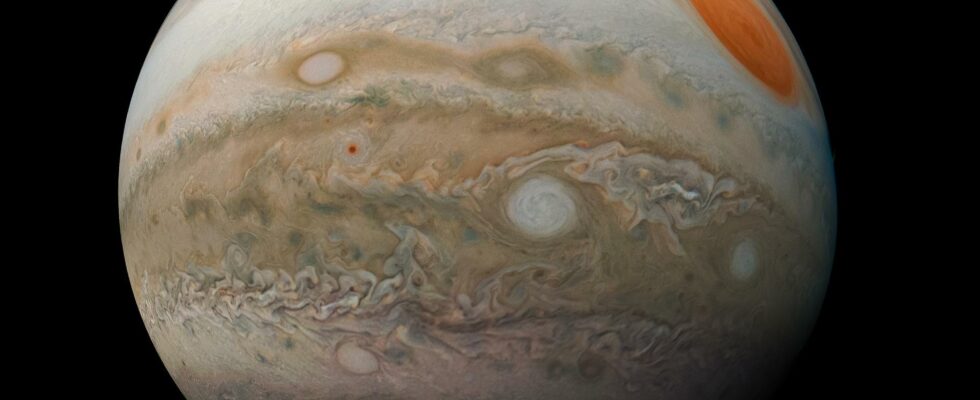It is difficult to know since when this gigantic storm has been unleashing its winds in Jupiter’s atmosphere. What is certain, however, is that it is less and less imposing! Its surface area is decreasing, and its currently pale color makes it difficult to observe… However, it is very useful for deciphering gas giants.
The first observations of the “Great Red Spot” (often called GRS, an anglicism among astronomers) in the cloud bands of Jupiter date back directly to those of Cassini in 1665. However, it is difficult to know how its shape evolved just afterwards, but since At the end of the 19th century, regular and increasingly precise observations informed us about this gigantic storm. Indeed, it is a deep (more than 500 km!) whirlpool in the southern hemisphere of the giant planet, located between two of the famous and violent bands of windy currents which go all around Jupiter. The winds at its edges can reach 680 km/h, as measured by successive probes on site, but… For several years, we have known that the Great Red Spot is shrinking.
A phenomenon observed over the long term
A study published in 2021 even showed that the stain has been at a record pace since 2012! The phenomenon is of great interest to astrophysicists, since gaseous planets are particularly numerous in our galaxy and in the Universe, but we only have two “classic” ones on hand with Jupiter and Saturn (Uranus and Neptune also, but they are instead classified as frozen giants), so studying the dynamics of winds and currents on this type of planets is important for generating new models. NASA’s Juno probe, currently around Jupiter, is continuing its measurements to better understand the different currents and what is happening in the depths of the giant!
However, not all aspects of the Great Red Spot are yet known. In theory, it should even continue to “feed” on small eddies that it absorbs and the jet streams that surround it. However, its diameter (12,500 km) is now less than that of the Earth, while at the beginning of the 20th century, our planet could be placed more than 3 times in its ovoid shape.
What future for this big stain?
Will it disappear? And if so, will it be sudden, or will the process take a few more decades? Perhaps it is just a cycle, in which case scientists will be curious to know what causes this minimum and the reformation… The Great Red Spot has not finished asking questions. Its current situation, despite very large whirlwinds around it, is relatively worrying, not for Jupiter, but for terrestrial observers. In fact, it is fainter than in previous years, and it is annoying to spot it clearly with telescopes which until now had “barely” the necessary resolution. Jupiter doesn’t make it easy for us with its stain!
Source : Sky & Telescope

7